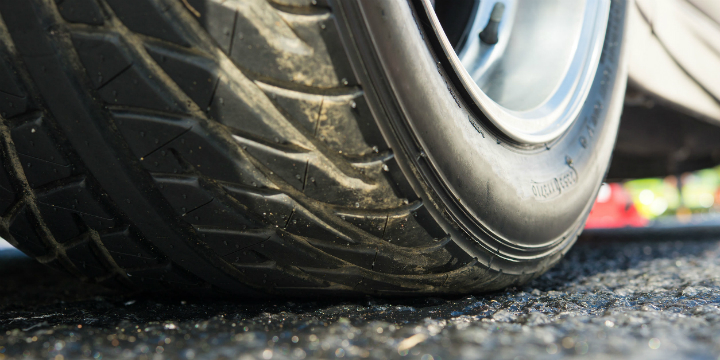https://www.jthughes.co.uk/Blog/View/How-to-stop-premature-car-tyre-wear/3006
How to stop premature car tyre wear.
Car tyres are an expensive necessity and, with four that need to be replaced periodically, the impact on your household budget can be considerable, even without accounting for unexpected damage caused by debris on the road and potholes.

With the government committing £104 million to repairing Shropshire's potholes before 2020, and pothole reports in Telford & Wrekin hit 5,000 in a year it pays to be careful. When you purchase new car tyres, you optimistically hope that they will prove to be durable, saving you the expense of costly replacements; therefore, it is essential to take maximum care of your car’s tyres in order to give them the longest lifespan possible, as well as ensuring optimum safety when on the road.
Premature tyre wear is frustrating and costly, but fortunately, it is also preventable. In general, there are three main causes of early tyre wear: incorrect inflation, overloading and inaccurate wheel alignment.
Incorrect inflation.
Incorrect inflation means tyres may be overinflated or underinflated, both of which can severely curtail the lifespan of your vehicle’s tyres. You are also likely to notice an impact on the quality of the ride and the frequency with which you need to refuel, but also the accuracy of your car’s braking and traction are likely to be adversely affected.
Tyres that are underinflated – most likely because the air pressure hasn’t been monitored by carrying out regular routine checks – suffer from too much flexing in their sidewalls, leading to overheating and an inability to grip the road correctly. Not only will this cause quicker fuel consumption, but the tyres will wear unevenly, meaning earlier replacement will be essential to stay within the strict laws that govern the depth of tread.
Overinflated tyres have a much narrower contact point with the road, meaning you’ll observe rapid wear around the centre of the tyre. Overinflated tyres also have an increased likelihood of blowing.
Carrying out a simple weekly tyre pressure check, or keeping an eye on the monitoring system in your car (if fitted) can help to ensure your vehicle’s tyres are always inflated at the manufacturer’s recommended pressure.
Ads by JT Hughes
Scroll to continue with content
Overloading.
Car manuals usually offer guidance on correct inflation of tyres for different weight bearing loads, as overloading your vehicle without adjusting your tyres to compensate for the extra weight can cause significant damage.
Overloading places undue pressure on the sidewall of the tyres, causing the tyre to be misshapen and wear unevenly, while the excessive heat that accumulates as a result can cause an unpredictable blowout that, at speed, could be extremely dangerous.
To help prevent premature wear or damage caused by overloading, check the load index (located on the sidewall of the tyre) and make sure you do not go over the load capacity that relates to this.
Incorrect wheel alignment.
Wheel alignment, which must be carried out by a properly equipped garage or tyre fitter, describes the way in which the wheels on your car are angled by adjusting the steering and suspension, to enable the tyres to achieve optimum contact with the road surface.
Wheel alignment can be easily disrupted by driving over potholes or speed bumps, or accidentally colliding with the kerb, leading to one or both wheels becoming misaligned, the effect of which will be uneven wear around the edges of the tyres.
Keeping an eye on the pattern of wear on your car’s tyres will indicate if there is a problem with the wheel alignment. Signs of uneven wear should prompt a visit to a tyre fitter or garage so that the alignment can be checked and, if necessary, corrected.
Uneven and premature wear of tyres is unwanted as it is certain to necessitate early replacement, as well as making the tyres of your vehicle less effective in maintaining a firm grip on the road surface. By carrying out some simple, regular maintenance tasks and checks, it is possible to prevent premature wear, giving your tyres the longest lifespan possible.